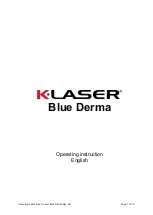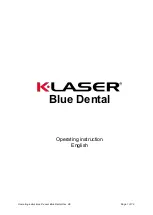
33
CANNON
®
TE-1500 Thermoelectric Constant Temperature Bath
Revision 1.1b—January, 2007;
CANNON
®
Instrument Company
2139 High Tech Road • State College, PA 16803 • USA
NBS monograph 150:
Joining Separated Mercury Columns
The following text outlines procedures for joining separated mercury
columns in thermometers. The text is adapted from:
NBS MONOGRAPH 150 Liquid-In-Glass Thermometry
Wise, Jacquelyn A.
NOTE
Many inquiries are received concerning separated mercury column which
occur especially during shipment. Since no means of avoiding such
occurrences has yet been found, some directions for joining mercury may
be helpful and are described below.
(A)
The bulb of the thermometer may be cooled in a solution of common salt,
ice, and water (or other cooling agent) to bring the mercury down slowly
into the bulb. If the salt solution does not provide sufficient cooling,
carbon dioxide snow (dry ice) may be used. Since the temperature of dry
ice is approximately -78°C (-108°F), and mercury freezes at approxi-
mately -40°C (-40°F), the mercury will solidify. Cool only the bulb and
never the stem or mercury column. Moderate tapping of the bulb on a
rubber stopper or similar soft spongy object, or the application of cen-
trifugal force, by swinging the thermometer in a short arc (i.e. use of
centrifugal force), usually serves to unite the mercury in the bulb. Care
must be taken to warm the top of the bulb first, so pressures in the bulb
due to expanding mercury may be relieved.
(B)
If there is a contraction chamber above the bulb or an expansion chamber
at the top of the thermometer, the mercury can sometimes be united by
warming the bulb until the column reaches the separated portions in
either enlargement. Great care is necessary to avoid filling the expansion
chamber completely with mercury, which might produce pressures large
enough to burst the bulb. (The expansion chamber should never be more
than 2/3 full). Joining the mercury is more readily accomplished if the
quantity in either cavity has been shattered into droplets by tapping the
thermometer laterally against the hand.
This procedure should not be used it if requires the thermometer to be
heated above 260°C (500°F) and the bulb should never be heated in an
open flame.
(C)
As a last resort, especially for thermometers having no expansion cham-
bers, small separated portions of the column can sometimes be dispersed
if mercury is warmed into droplets tiny enough to leave space for the gas
to by-pass. The thermometer is heated, and the droplets are collected by
the rising mercury column.
Organic liquid procedures
The procedure for thermometers containing organic liquids is similar.
Separated liquid in the stem can be vaporized and permitted to drain
Summary of Contents for TE-1500
Page 1: ...TE 1500 Constant Temperature Bath Instruction Operation Manual ...
Page 2: ......
Page 39: ......




































